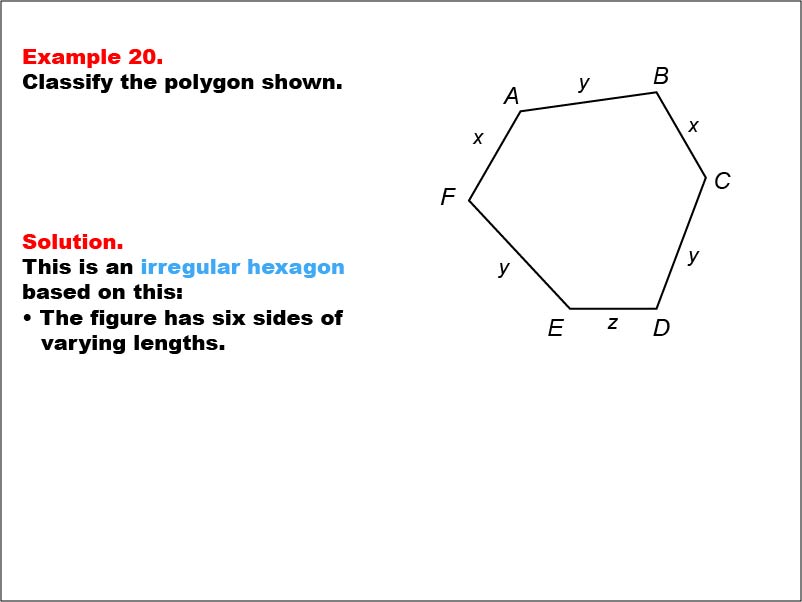
Display Title
Math Example--Polygons--Polygon Classification: Example 20
Display Title
Math Example--Polygons--Polygon Classification: Example 20

Topic
Polygons
Description
This example presents a hexagon with sides labeled as x, y, and z, indicating varying lengths. It illustrates another case of an irregular hexagon, demonstrating that the presence of different variables for side lengths suggests irregularity.
Polygon classification is a fundamental concept in geometry that helps students analyze and categorize shapes based on their properties. This collection of examples provides a comprehensive look at various types of hexagons, emphasizing the importance of side length equality in determining regularity.
Presenting multiple worked-out examples is crucial for students to fully grasp the nuances of polygon classification. Each example offers a unique perspective on how to identify irregular hexagons, allowing students to build a comprehensive understanding through varied representations and notations.
Teacher's Script: Take a look at this hexagon, class. We see sides labeled with different variables. What does this suggest about the side lengths? How can we use this information to classify the hexagon as irregular? Let's discuss why having different variables for side lengths indicates that the hexagon is not regular.
For a complete collection of math examples related to Polygons click on this link: Math Examples: Polygon Classification Collection.
| Common Core Standards | CCSS.MATH.CONTENT.5.G.B.3, CCSS.MATH.CONTENT.7.G.B.6 |
|---|---|
| Grade Range | 6 - 8 |
| Curriculum Nodes |
Geometry • Polygons • Definition of a Polygon |
| Copyright Year | 2013 |
| Keywords | polygons, classification |